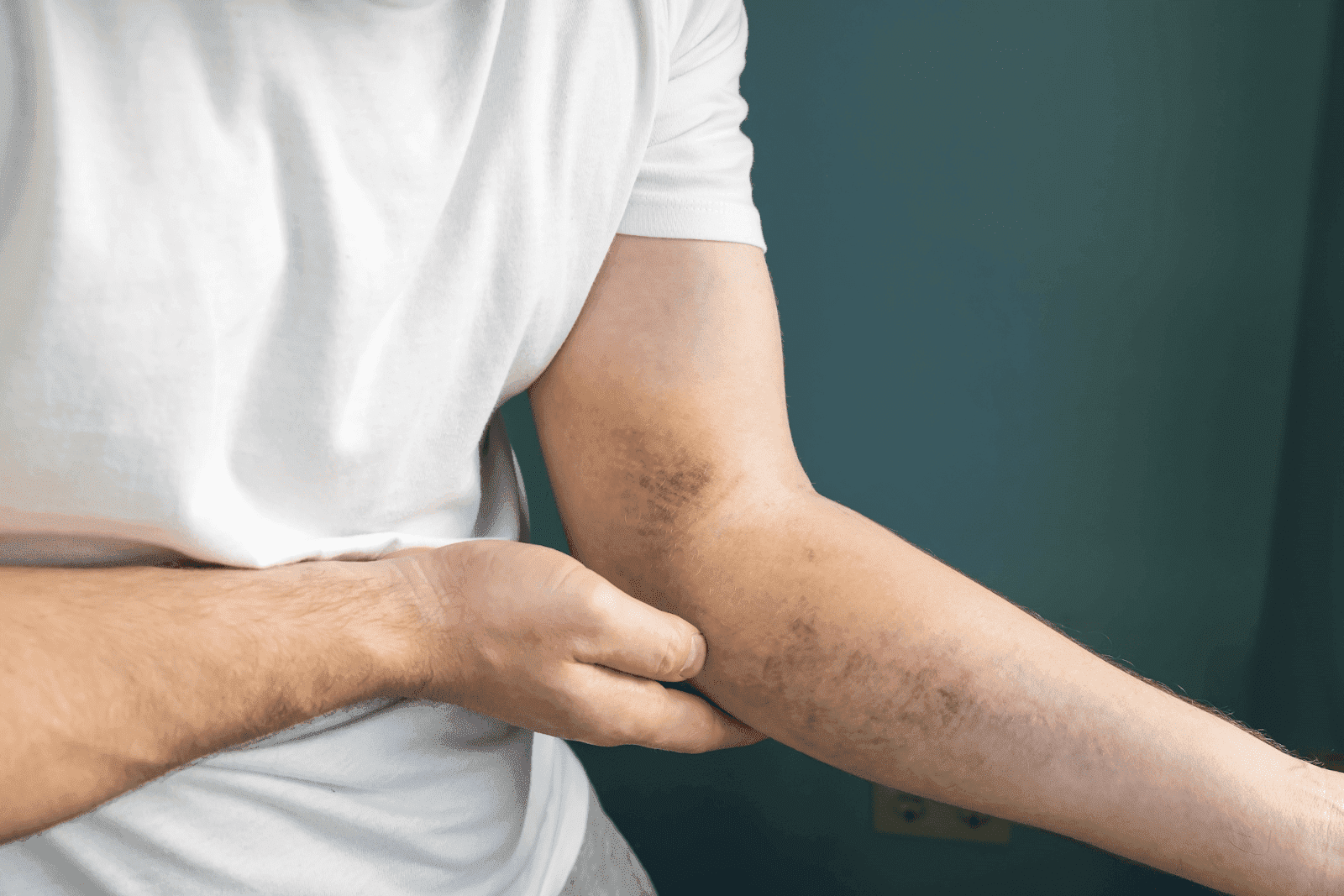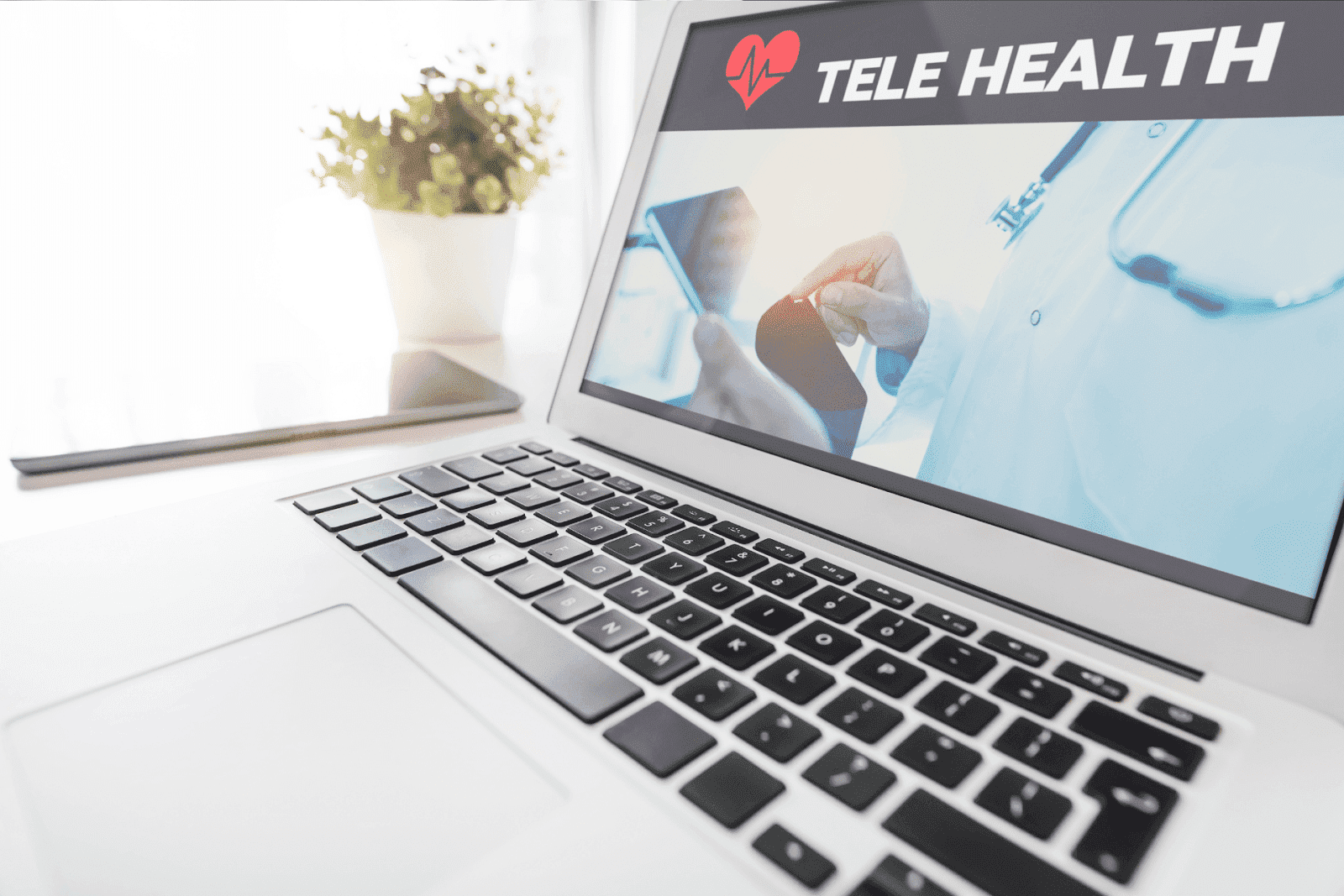Does Mounjaro Affect Fertility?
Understanding Mounjaro and Its UsesMounjaro is a prescription medication commonly prescribed for managing type 2 diabetes. It belongs to a class of drugs that help regulate [...]
Read More
Medically reviewed by Oghenefejiro Okifo | MD, Harvard Medical School | Henry Ford Hospital - Detroit, MI on August 19th, 2025.
Bruises are an everyday nuisance for many, but when bruising becomes frequent, large, or inexplicable, it can indicate something more than clumsiness. Understanding why bruises form and when they signal an underlying medical issue helps guide appropriate action: simple home care, a visit to a clinician, or urgent evaluation. This article explains common and uncommon causes of easy bruising, what tests are typically run, how bruises can be managed, and when to use telehealth or in-person care.
A bruise, also called a contusion, forms when small blood vessels (capillaries) just under the skin break and leak blood into the surrounding tissue. The initial dark blue or purple color comes from oxygen-depleted blood. As the body breaks down hemoglobin, the color shifts through green and yellow before fading. Bruises are typically associated with trauma, from a bump or fall, but not every bruise is explained by an obvious injury.
Location, size, and accompanying symptoms matter. A small bruise on the shin after bumping into furniture is common and expected. A large bruise on the abdomen without any known trauma, repeated bruises in multiple areas, or bruises that appear after minimal contact should prompt a closer look.
 Common Causes of Easy Bruising
Common Causes of Easy BruisingSome people bruise more easily for benign reasons that do not represent a serious health problem. These include age-related changes, delicate skin, genetics, and certain medications or supplements.
As skin ages, it becomes thinner and loses some of the protective fat and connective tissue that cushions blood vessels. Older adults often notice larger, more frequent bruises from minor knocks that would not have caused a bruise when they were younger.
Some families simply bruise more than others without an identifiable disorder. Fair-skinned individuals may notice bruises more readily because of contrast against their skin tone, and some hereditary platelet function variations can cause mild increases in bruising.
Anticoagulants (warfarin, apixaban, rivaroxaban), antiplatelet drugs (aspirin, clopidogrel), and certain anti-inflammatories (NSAIDs) increase bleeding risk and can lead to easier bruising. Herbal supplements such as ginkgo biloba, high-dose fish oil, and vitamin E may also affect clotting. Always discuss medication and supplement use with a clinician before stopping or changing doses.
When bruising is severe, recurrent, or accompanied by other signs such as mucosal bleeding (nosebleeds, gum bleeding), petechiae (tiny pinpoint red spots), or systemic symptoms, underlying medical conditions should be considered. The list below covers common and serious causes.
Platelets help form the initial plug that stops bleeding. Low platelet numbers (thrombocytopenia) or dysfunctional platelets can produce easy bruising and additional bleeding symptoms. Causes include immune thrombocytopenic purpura (ITP), certain medications, viral infections, and bone marrow disorders.
Hemophilia and other clotting factor deficiencies typically present with deeper bleeding into joints and muscles, but bruising can be a feature. Acquired deficiencies due to liver disease or vitamin K deficiency also impair clotting cascade proteins and increase bleeding tendency.
The liver produces most clotting factors. Chronic liver disease or acute liver failure can lower factor production, impair vitamin K processing, and produce coagulopathy, leading to easy bruising and bleeding. Other signs may include jaundice, swelling, and changes in mental status in severe cases.
Vitamin C deficiency (scurvy) weakens blood vessel walls, leading to spontaneous bruising and poor wound healing. Vitamin K deficiency impairs clotting factor activation and increases bleeding. Deficiencies are less common in developed countries but can occur in people with restrictive diets, alcoholism, or malabsorption.
Leukemia and other bone marrow disorders can reduce platelet production and affect normal blood cell formation. In addition to easy bruising, symptoms might include fatigue, unexplained fevers, night sweats, and frequent infections.
Inflammation of blood vessels (vasculitis) can cause fragile vessels and skin changes, leading to bruising or purpura. Connective tissue disorders such as Ehlers-Danlos syndrome also make skin and vessels more fragile, producing easy bruising and hyperflexible joints.
Most bruises are harmless and improve over days to weeks, but certain features merit immediate evaluation or emergency care.
The bruise is large and expanding rapidly, especially if accompanied by severe pain.
Bruising occurs after head trauma or a significant fall.
There is difficulty breathing, severe swelling, or signs of internal bleeding (dizziness, fainting, blood in vomit or stool).
Multiple unexplained bruises appear suddenly, particularly with petechiae (tiny red or purple spots) or mucosal bleeding.
There are signs of infection in or near the bruise (increasing redness, warmth, pus, fever).
Repeated or worsening bruising without a clear cause, new bruises in a person taking blood-thinning medications, or bruises accompanied by systemic symptoms (fatigue, fever, weight loss) should prompt urgent outpatient evaluation. Routine labs and a focused clinical history often clarify the cause.
Evaluation of easy bruising centers on a detailed history, medication review, physical exam, and targeted laboratory testing. Tests are chosen based on clinical suspicion and may include basic screens or in-depth hematology workups.
Complete blood count (CBC) with platelet count to detect thrombocytopenia.
Peripheral blood smear to look for abnormal cells or platelet clumping.
Prothrombin time (PT)/international normalized ratio (INR) and activated partial thromboplastin time (aPTT) to assess the clotting cascade.
Liver function tests to evaluate hepatic contribution to clotting factor production.
Von Willebrand factor testing and platelet function studies are performed when platelet dysfunction is suspected.
Coagulation factor assays for suspected inherited deficiencies.
Vitamin C or K levels should be checked if dietary deficiency or malabsorption is a concern.
Bone marrow biopsy in case of suspected marrow failure or hematologic malignancy.
Simple measures can often reduce pain and swelling and speed recovery for routine bruises.
Apply a cold pack wrapped in a cloth to the bruise for 10–20 minutes every hour for the first 24–48 hours to reduce bleeding and swelling.
After 48 hours, gentle warm compresses can help promote blood resorption.
Elevate the injured area when possible to reduce blood pooling.
Over-the-counter pain relievers such as acetaminophen can be used; avoid NSAIDs if there is an increased bleeding risk or if advised by a clinician to avoid them.
If on anticoagulant or antiplatelet therapy, do not stop medications without consulting the prescribing clinician. Some bruises are harmless, but stopping prescribed blood thinners abruptly may lead to dangerous clotting events. When in doubt, get professional guidance.
Long-term management depends entirely on the root cause. Simple deficiencies may be corrected with supplements and diet, while clotting disorders require specialized care.
Vitamin C deficiency is treated with supplementation and dietary improvement, including more citrus fruits, strawberries, peppers, and leafy greens. Vitamin K deficiency may need dietary adjustments or supplementation depending on the cause.
If medications contribute to bruising, clinicians will weigh the risks and benefits of dose adjustments, switching drugs, or temporary holds. A healthcare provider should always guide this decision because stopping anticoagulants or antiplatelets carries its own risks.
Hematology referral is appropriate for suspected clotting disorders, platelet dysfunction, bone marrow problems, or unexplained thrombocytopenia. Management may include immunosuppressive therapy for immune thrombocytopenia, clotting factor replacement, or targeted cancer therapy where relevant.
Telehealth can be an excellent first step for many people with new or mild bruising. Virtual visits allow rapid assessment of history, review of medications, and triage to in-person care when needed. For those seeking quick answers and convenience, AI-powered tools plus clinician video visits can speed evaluation without compromising safety.
Doctronic.ai provides free AI doctor visits on its website, offering fast, evidence-based initial assessments that draw on current peer-reviewed medical research. For follow-up, Doctronic offers low-cost telehealth video visits (under $40) with licensed clinicians 24/7 across all 50 states, making it simple to get a timely evaluation and next-step testing recommendations. Visit Doctronic.ai for an immediate AI-guided assessment or to schedule a telehealth visit.
 How Doctronic Helps When Bruising Is Confusing
How Doctronic Helps When Bruising Is ConfusingWhen bruising is unexplained, it often comes with many questions: Are medications to blame? Is more testing necessary? Should this be treated in the emergency department? Immediate, evidence-based guidance can reduce anxiety and help choose the correct next steps.
Doctronic’s AI doctor synthesizes the latest peer-reviewed medical expertise to provide fast answers and practical recommendations, and it remembers patients over time to tailor advice. If an in-depth, clinician-led visit is needed, inexpensive video visits with a licensed doctor are available 24/7. This combination speeds evaluation, reduces unnecessary trips, and provides a second opinion that can be taken to an in-person provider if further testing is necessary. Learn more and start with a free AI visit at Doctronic.ai.
After an evaluation, most people with benign causes receive reassurance and simple advice, stop or adjust certain supplements, protect the skin, correct diets, and watch for worsening symptoms. When tests show a more serious cause, specialty care is coordinated promptly. Follow-up frequently includes repeat labs to ensure platelet counts or coagulation studies normalize and symptom tracking to detect new bleeding signs early.
While not all bruising can be prevented, simple strategies reduce frequency and severity.
Wear long sleeves and pants during activities that risk bumps, use padding for contact sports where appropriate, and arrange living spaces to reduce fall risks, remove rugs, improve lighting, and install handrails where needed.
Regular medication reviews with a clinician can clarify whether any prescription, over-the-counter drug, or supplement is contributing to bruising. Adjustments should always be made under medical guidance.
A balanced diet with adequate fruits and vegetables supports vessel health and healing. Gentle skin care, moisturizing, avoiding harsh soaps, and protecting from excessive sun exposure can help preserve the skin’s protective barrier.
Occasional bruises from known bumps are usually harmless, but frequent, large, unexplained, or painful bruises, especially when paired with other bleeding signs, require medical evaluation. A practical first step for many is a telehealth assessment that can triage the need for urgent care, recommend initial tests, and arrange prompt follow-up. Tools that combine rapid, research-based AI assessment with access to affordable clinicians, such as Doctronic.ai, make it easier to get safe, timely guidance from home. When in doubt about a bruise, timely evaluation helps catch treatable conditions early and provides peace of mind.
If frequent or unexplained bruises have you concerned, start with Doctronic, the #1 AI Doctor that combines the latest peer-reviewed medical knowledge with a personal, persistent medical memory. Get a rapid, research-backed assessment for free on our site, then book an inexpensive (<$40) telehealth video visit with a licensed clinician 24/7 across all 50 states if you need follow-up. Over 10 million people have trusted Doctronic for faster, smarter, and more personal care from our NYC-based team. Skip the line. Talk to an AI Doctor Now, for free.
Unexplained bruising that appears without trauma, occurs frequently from minor bumps, or comes with bleeding gums requires prompt medical evaluation to rule out serious conditions. Simple medication adjustments or vitamin supplementation can often resolve the issue once underlying causes are identified. If you're experiencing unusual bruising patterns or have concerns about your symptoms, Doctronic can help you get answers quickly.
Understanding Mounjaro and Its UsesMounjaro is a prescription medication commonly prescribed for managing type 2 diabetes. It belongs to a class of drugs that help regulate [...]
Read MoreUnderstanding Hydrocortisone Uses and DosagesHydrocortisone is a versatile medication primarily used to reduce inflammation and suppress the immune system in various [...]
Read MoreUnderstanding Zepbound and MounjaroWhen managing type 2 diabetes, patients often face a variety of medication options. Zepbound and Mounjaro are two such options gaining [...]
Read More